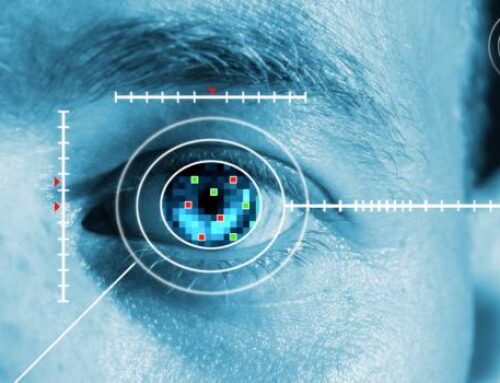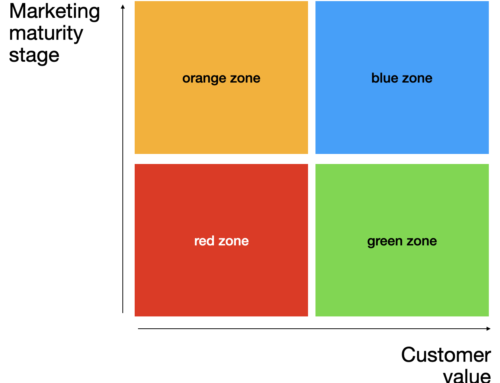I remember watching the movie, Electric Dreams, back in 1985, thinking wow, computers can talk and act like a human! But I was too young to appreciate what was coming down the line.
Fast forward to 2019, and we’re seeing all sorts of automation and robotic influence across society.
Worldwide spending on robotics systems is forecasted to reach $103.4bn in 2019, growing at a CAGR of 18.9% over the forecast period of 2017–19, according to the International Data Corporation’s (IDC’s) Worldwide Semiannual Robotics and Drones Spending Guide.
China has implemented widespread surveillance and facial recognition techniques, leading the way with Face++ (with and without people’s permission). They claim to have 170 million surveillance cameras. And hope to have 570 million by 2020 – that’s nearly one camera for every two Chinese citizens.
Railway police in China’s Hanan province already use facial recognition sunglasses that can identify travellers, and criminals, within 100 milliseconds.
Source: Business Insider
Alibaba has a chain of cashless stores called Hema where shoppers use their face and phone number to approve payments from their Alipay account.
Source: Business Insider
And Amazon claims to have over 100,000 robots in its warehouses, but also employs over 500,000 humans worldwide. Human employees at Amazon wear a “Robotic Tech Vest” — a bit of tech that warehouse workers can wear to make them visible to nearby machines. Similar sensors and laser scanners have been increasingly used in all sorts of areas from agriculture to autonomous driving.
Source: Amazon via TechCrunch
And we’ve seen robots being used to improve customer experience, answering customer questions with chatbots, providing restaurant service, and working around homes.
But where is it all going for marketers in 2019 and beyond?
Search
SEO is evolving from Artificial Intelligence (AI) and machine learning algorithms.
Search engines are not only crawling for keywords but “cluster content”, meaning that machines are looking for context in conjunction with keyword placement, making it easier for searchers to find the content most relevant to what they are looking for.
In essence looking for conversational understanding.
Data analysis and insight generation is a competitive differentiator
The conversation has moved on from big data, data collection, storage and management, to interpreting the data and uncovering actionable insights.
For example, Real Estate agents are turning to products like Core Logic’s Smart Move to help understand the change in suburbs from people moving in / out. Offering the ability to target marketing and advertising better.
We’ll see further and further market segmentation. However, one of the risks is drilling down too deeply and not actually creating a positive ROI. Marketers will need to weigh up the excitement of precision marketing versus the actual ROI.
Small businesses win
Small businesses can benefit from employing a digital workforce to perform functional tasks that are necessary for rapid scaling, as opposed to hiring human labour to conduct those same tasks.
Take a look at Rita for example – Australasia’s first Digital Employee for real estate – a robot developed by Australian start-up Aire
Sales interactions lagging human eagerness
We’ve seen technology applied to retail shops for a while now, however, marketers still lag behind when it comes to applying AI and machine learning to actually engage shoppers.
According to Shopper Marketing magazine’s 2019 Trends Survey, just 37 percent of CPG marketing executives report that their organization is currently utilizing AI/machine learning. And, of that percentage, only one third apply AI to direct consumer engagement.
Businesses open up new revenue streams
There seems to be a big trend in making money from data. Now this is a topic that should be explored on its own. We’ve all seen the Facebook US election data scandal.
But in summary, I’m seeing businesses with large databases of customer activities leveraging their data and provide data as a service
Ethics start to come to the fore
Whilst there are no global standards for robot development and coding, we need to be cognisant that it’s up to you to apply an ethical standard.
It deeply concerns me that coders aren’t developing to any standards. So how do we know that the machine learning approaches are built with ethical approaches and values.
And it’s human nature to chase commercial gain at all expense that is the biggest worry. Just look at what has happened in Australian banking with the release of Commissioner Hayne’s royal commission final report. The Ethics Alliance have released a good piece here
Robotic marketing planning
Have you heard of Robotic Marketer? The brainchild of Mellissah Smith.
Mellissah now claims that after a 1 – 2 hour marketing planning session with herself (yes a human), or one of her team members, the information is then fed into the Robotic Marketer.
And in less than an hour, a comprehensive 40 page plus marketing strategy is produced, ready to be implemented.
Shall I retire now?










Leave A Comment